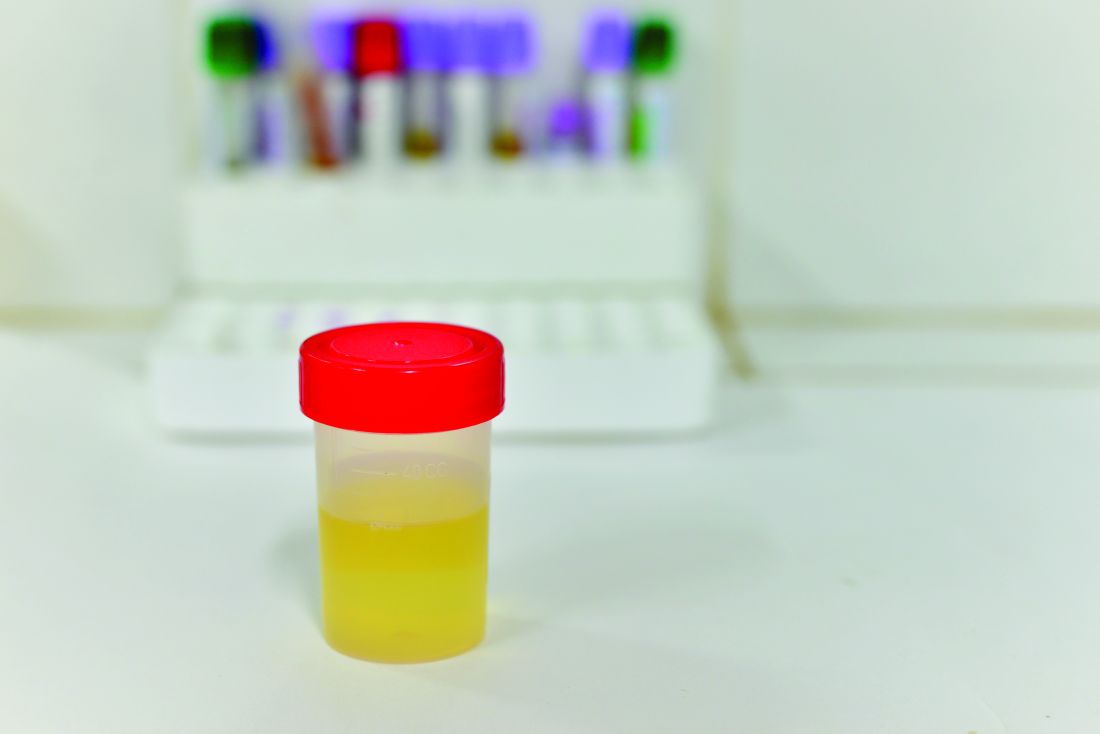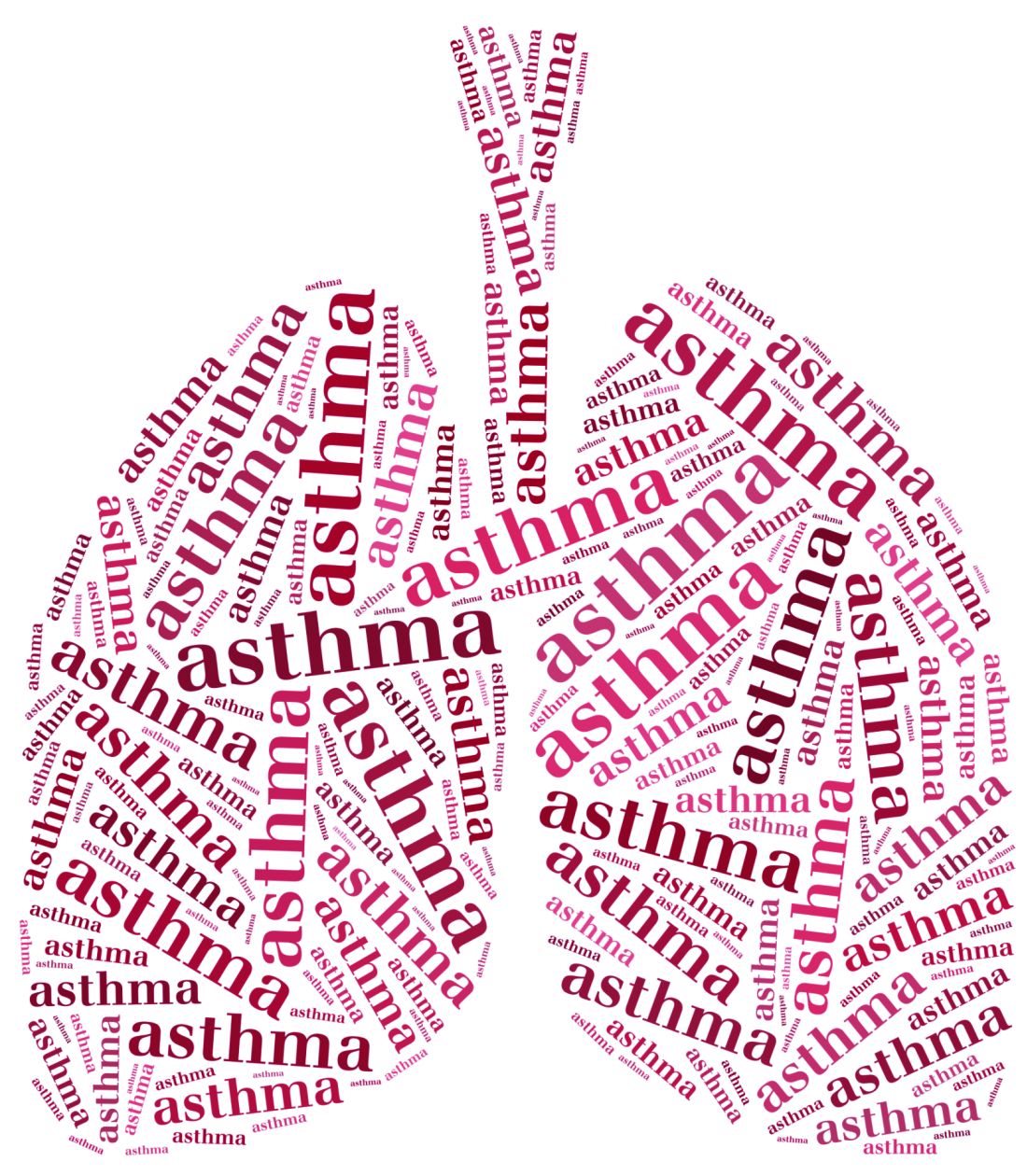User login
FDA approves Vabomere for complicated UTI in adults
The Food and Drug Administration has approved Vabomere (meropenem and vaborbactam) for adults with complicated urinary tract infection (cUTI), including pyelonephritis caused by susceptible Enterobacteriaceae, the agency has announced.
The approval was based on results of the TANGO 1 trial, a phase 3, multicenter, double-blind study of 545 adult patients with cUTI. Overall, 98.4% of patients treated with Vabomere saw improvement in symptoms and negative urine culture tests by the end of intravenous treatment, compared with 94.3% of those treated with piperacillin/tazobactam (95% confidence interval, 0.3%-8.8%). Improvement continued in about 77% of patients treated with Vabomere who had resolved symptoms 7 days after completing treatment, compared with about 73% of those who were treated with piperacillin/tazobactam, the FDA said Aug. 29 in a press release.
Headache, infusion site reactions, and diarrhea were common adverse effects of Vabomere. The drug also has been associated with allergic reactions and seizures, so it should not be administered to patients with a history of anaphylaxis.
“Vabomere represents a significant new advancement in addressing [Klebsiella pneumoniae carbapenemase]-producing Enterobacteriaceae, for which there are currently limited treatment options,” Clive A. Meanwell, MD, PhD, chief executive officer of The Medicines Company, said in the statement.
Rempex Pharmaceuticals, a Medicines Company unit, received the approval. The Medicines Company said the drug is expected to be available before the end of the year.
The Food and Drug Administration has approved Vabomere (meropenem and vaborbactam) for adults with complicated urinary tract infection (cUTI), including pyelonephritis caused by susceptible Enterobacteriaceae, the agency has announced.
The approval was based on results of the TANGO 1 trial, a phase 3, multicenter, double-blind study of 545 adult patients with cUTI. Overall, 98.4% of patients treated with Vabomere saw improvement in symptoms and negative urine culture tests by the end of intravenous treatment, compared with 94.3% of those treated with piperacillin/tazobactam (95% confidence interval, 0.3%-8.8%). Improvement continued in about 77% of patients treated with Vabomere who had resolved symptoms 7 days after completing treatment, compared with about 73% of those who were treated with piperacillin/tazobactam, the FDA said Aug. 29 in a press release.
Headache, infusion site reactions, and diarrhea were common adverse effects of Vabomere. The drug also has been associated with allergic reactions and seizures, so it should not be administered to patients with a history of anaphylaxis.
“Vabomere represents a significant new advancement in addressing [Klebsiella pneumoniae carbapenemase]-producing Enterobacteriaceae, for which there are currently limited treatment options,” Clive A. Meanwell, MD, PhD, chief executive officer of The Medicines Company, said in the statement.
Rempex Pharmaceuticals, a Medicines Company unit, received the approval. The Medicines Company said the drug is expected to be available before the end of the year.
The Food and Drug Administration has approved Vabomere (meropenem and vaborbactam) for adults with complicated urinary tract infection (cUTI), including pyelonephritis caused by susceptible Enterobacteriaceae, the agency has announced.
The approval was based on results of the TANGO 1 trial, a phase 3, multicenter, double-blind study of 545 adult patients with cUTI. Overall, 98.4% of patients treated with Vabomere saw improvement in symptoms and negative urine culture tests by the end of intravenous treatment, compared with 94.3% of those treated with piperacillin/tazobactam (95% confidence interval, 0.3%-8.8%). Improvement continued in about 77% of patients treated with Vabomere who had resolved symptoms 7 days after completing treatment, compared with about 73% of those who were treated with piperacillin/tazobactam, the FDA said Aug. 29 in a press release.
Headache, infusion site reactions, and diarrhea were common adverse effects of Vabomere. The drug also has been associated with allergic reactions and seizures, so it should not be administered to patients with a history of anaphylaxis.
“Vabomere represents a significant new advancement in addressing [Klebsiella pneumoniae carbapenemase]-producing Enterobacteriaceae, for which there are currently limited treatment options,” Clive A. Meanwell, MD, PhD, chief executive officer of The Medicines Company, said in the statement.
Rempex Pharmaceuticals, a Medicines Company unit, received the approval. The Medicines Company said the drug is expected to be available before the end of the year.
Test everyone with diagnosed HIV for drug resistance as they enter care
Antiretroviral therapy (ART) for HIV is critical for achieving viral suppression, which improves the health and longevity of people living with infection and dramatically reduces the risk of transmitting HIV to others. Despite these clear benefits, not everyone prescribed ART adheres to their medications, which can result in drug resistance – and transmission of drug-resistant HIV to others.
A Centers for Disease Control and Prevention analysis of eight U.S. cities found that more than 18 percent of 13,393 people with a recent HIV diagnosis had infections that were resistant to at least one form of treatment. Since 2007, the U.S. Department of Health & Human Services has recommended that everyone with diagnosed HIV infection be tested for drug resistance when HIV care begins; however, it’s not known how closely HIV care providers in the United States follow the guidelines.
To learn more, the CDC recently analyzed HIV surveillance data to examine testing patterns among people living with diagnosed HIV who had entered HIV medical care. The results of the study, published in AIDS Care (2017 May. doi: 10.1080/09540121.2017.1316356), indicated that, of the people with HIV diagnosed in 2013 who had entered medical care, only 66% had been tested for resistance. Of those tested, 68% received testing at the beginning of care.
The findings also show that resistance testing is performed less often among certain groups, including males who inject drugs. In recent reports, about a third of people who inject drugs in selected U.S. cities indicated they did not have health insurance, and nearly 80% lived at or below the federal poverty level. Lack of health care access and low socioeconomic status may be potential barriers to receiving medical care and laboratory testing. Additionally, this population might not be aware of available resources that support these services, including those provided through the Ryan White HIV/AIDS Program and federally qualified health centers.
Previous research has also shown that non-HIV specialists are less likely than HIV specialists to order resistance testing for their patients. With potentially more injection drug use and fewer specialist health care services available in less-populated communities, there is an urgent need both to improve HIV testing and increase resistance testing in rural communities. This is important given the growing potential for HIV outbreaks among people who inject drugs, as well as the substantial rise in the number of deaths attributed to opioid use in many communities throughout the nation.
The study findings also indicate that resistance testing is less common among people with higher CD4 counts in some states, including Michigan, New York, and Texas. CD4 cells are a type of white blood cell that helps in protecting the body from infections, but they are also targeted by HIV. CD4 cell counts can be used to determine the stage of HIV infection in a person. As HIV stays in the body longer, CD4 cells decrease. Even if treatment is delayed for a medical reason, such as coinfection with tuberculosis, resistance testing should still be conducted at a person’s entry to care to help ensure treatment success later.
These results have strong implications for clinical practice and management of people with newly diagnosed HIV. More research is needed to identify the factors influencing lacking or delayed resistance testing so that we can address differences in the development of resistance, as well as other clinical outcomes, over time.
Antiretroviral therapy (ART) for HIV is critical for achieving viral suppression, which improves the health and longevity of people living with infection and dramatically reduces the risk of transmitting HIV to others. Despite these clear benefits, not everyone prescribed ART adheres to their medications, which can result in drug resistance – and transmission of drug-resistant HIV to others.
A Centers for Disease Control and Prevention analysis of eight U.S. cities found that more than 18 percent of 13,393 people with a recent HIV diagnosis had infections that were resistant to at least one form of treatment. Since 2007, the U.S. Department of Health & Human Services has recommended that everyone with diagnosed HIV infection be tested for drug resistance when HIV care begins; however, it’s not known how closely HIV care providers in the United States follow the guidelines.
To learn more, the CDC recently analyzed HIV surveillance data to examine testing patterns among people living with diagnosed HIV who had entered HIV medical care. The results of the study, published in AIDS Care (2017 May. doi: 10.1080/09540121.2017.1316356), indicated that, of the people with HIV diagnosed in 2013 who had entered medical care, only 66% had been tested for resistance. Of those tested, 68% received testing at the beginning of care.
The findings also show that resistance testing is performed less often among certain groups, including males who inject drugs. In recent reports, about a third of people who inject drugs in selected U.S. cities indicated they did not have health insurance, and nearly 80% lived at or below the federal poverty level. Lack of health care access and low socioeconomic status may be potential barriers to receiving medical care and laboratory testing. Additionally, this population might not be aware of available resources that support these services, including those provided through the Ryan White HIV/AIDS Program and federally qualified health centers.
Previous research has also shown that non-HIV specialists are less likely than HIV specialists to order resistance testing for their patients. With potentially more injection drug use and fewer specialist health care services available in less-populated communities, there is an urgent need both to improve HIV testing and increase resistance testing in rural communities. This is important given the growing potential for HIV outbreaks among people who inject drugs, as well as the substantial rise in the number of deaths attributed to opioid use in many communities throughout the nation.
The study findings also indicate that resistance testing is less common among people with higher CD4 counts in some states, including Michigan, New York, and Texas. CD4 cells are a type of white blood cell that helps in protecting the body from infections, but they are also targeted by HIV. CD4 cell counts can be used to determine the stage of HIV infection in a person. As HIV stays in the body longer, CD4 cells decrease. Even if treatment is delayed for a medical reason, such as coinfection with tuberculosis, resistance testing should still be conducted at a person’s entry to care to help ensure treatment success later.
These results have strong implications for clinical practice and management of people with newly diagnosed HIV. More research is needed to identify the factors influencing lacking or delayed resistance testing so that we can address differences in the development of resistance, as well as other clinical outcomes, over time.
Antiretroviral therapy (ART) for HIV is critical for achieving viral suppression, which improves the health and longevity of people living with infection and dramatically reduces the risk of transmitting HIV to others. Despite these clear benefits, not everyone prescribed ART adheres to their medications, which can result in drug resistance – and transmission of drug-resistant HIV to others.
A Centers for Disease Control and Prevention analysis of eight U.S. cities found that more than 18 percent of 13,393 people with a recent HIV diagnosis had infections that were resistant to at least one form of treatment. Since 2007, the U.S. Department of Health & Human Services has recommended that everyone with diagnosed HIV infection be tested for drug resistance when HIV care begins; however, it’s not known how closely HIV care providers in the United States follow the guidelines.
To learn more, the CDC recently analyzed HIV surveillance data to examine testing patterns among people living with diagnosed HIV who had entered HIV medical care. The results of the study, published in AIDS Care (2017 May. doi: 10.1080/09540121.2017.1316356), indicated that, of the people with HIV diagnosed in 2013 who had entered medical care, only 66% had been tested for resistance. Of those tested, 68% received testing at the beginning of care.
The findings also show that resistance testing is performed less often among certain groups, including males who inject drugs. In recent reports, about a third of people who inject drugs in selected U.S. cities indicated they did not have health insurance, and nearly 80% lived at or below the federal poverty level. Lack of health care access and low socioeconomic status may be potential barriers to receiving medical care and laboratory testing. Additionally, this population might not be aware of available resources that support these services, including those provided through the Ryan White HIV/AIDS Program and federally qualified health centers.
Previous research has also shown that non-HIV specialists are less likely than HIV specialists to order resistance testing for their patients. With potentially more injection drug use and fewer specialist health care services available in less-populated communities, there is an urgent need both to improve HIV testing and increase resistance testing in rural communities. This is important given the growing potential for HIV outbreaks among people who inject drugs, as well as the substantial rise in the number of deaths attributed to opioid use in many communities throughout the nation.
The study findings also indicate that resistance testing is less common among people with higher CD4 counts in some states, including Michigan, New York, and Texas. CD4 cells are a type of white blood cell that helps in protecting the body from infections, but they are also targeted by HIV. CD4 cell counts can be used to determine the stage of HIV infection in a person. As HIV stays in the body longer, CD4 cells decrease. Even if treatment is delayed for a medical reason, such as coinfection with tuberculosis, resistance testing should still be conducted at a person’s entry to care to help ensure treatment success later.
These results have strong implications for clinical practice and management of people with newly diagnosed HIV. More research is needed to identify the factors influencing lacking or delayed resistance testing so that we can address differences in the development of resistance, as well as other clinical outcomes, over time.
Antimicrobial development model links financial incentives with public health needs
A new model promoting the development and sustainable use of antimicrobials has been proposed by the Duke University Margolis Center for Health Policy.
Dubbed the “Priority Antimicrobial Value and Entry (PAVE) Award,” the model “provides developers quick access to a significant reward upon market entry of an effective antimicrobial, and provides strong incentives to shift reimbursement from insurance plans to population- and value-based contracts, not payments based on volume of sales,” according to a white paper detailing the proposal.
“This model builds on and reinforces the shift to quality and value in U.S. health care, with payments more directly linked to public health benefits and total costs,” Gregory Daniel, PhD, deputy director of the Margolis Center and lead author of the report, said in a viewpoint published online in JAMA (2017 Aug 3. doi: 10.1001/jama.2017.10164). “Along with strong push mechanisms that remove some of the financial risk associated with initial development of drug candidates, these measures could make a major contribution to the global effort to create and sustain a robust pipeline of antimicrobials that address current and growing public health needs – and would do so through an approach well suited to the reforming U.S. health care system.”
The proposal combines incentives provided from both the public and private sectors.
Payments from public funds would be largest in year 1 and would decrease over the next 5-6 years, with each payment “contingent upon developers demonstrating an increasing share of their revenue from population-based [alternative payment models] linked to value to society through availability, support for sustainable use, and continued data collection,” the report notes, describing a method that emphasizes value and delinks revenues from volume.
Delinking revenues from volume has been a part of two prominent proposals in Europe. One proposed by Chatham House, a London-based public policy institute, also proposed a number of financial incentives, such as public funding and tax credits, to help finance development in addition to MERs. A second being developed in the European Union, expected to be finalized later this year, would provide grants for early stage research, establishment of a nonprofit developer to manage and finance discovery through commercialization, a MER to developers that meet certain criteria, an annual licensing fee to developers for access to their product, and a dual-pricing model that allows for higher prices to be charged for appropriate use.
The Duke paper identifies a number of contracting models, such as a manufacturer contracting with a health plan on a per-member per-month basis to provide the drug as needed, or episode-based payments as needed, for all hospitalized patients identified with specific diagnosis-related groups.
“Successful implementation of the PAVE Award will require cooperation between developers, payers, and providers,” the Duke policy researchers stated. “The contract should encourage short- and long-term savings from reduced inappropriate use, as well as reduced infection-related costs, such as extended hospital stays, treatment complications, and additional infections.”
For infectious diseases physicians, there are a few specific roles in addition to any that are played beyond being a part of the medical research.
“For example, as the clinicians on the front lines seeing the patients, they are able to really identify what are the emerging threats on the horizon and where do we need to be targeting R&D. I think that is useful for helping to inform which antibiotics should be eligible to receive market entry rewards,” Amanda Jezek, senior vice president of public policy and government relations at the Infectious Diseases Society of America, said in an interview. She also noted that physicians will be instrumental in “helping to create the political will to advance proposals like this because they are the ones who can really speak to what the need for patients is on the ground, in communities, and in hospitals.”
Physicians also will play a vital role in ensuring that any new antimicrobial drugs are not overused.
“Once these antibiotics are approved, infectious diseases physicians lead stewardship programs that are essential for ensuring that these drugs are used appropriately, and that is critical because if you start overusing the new antibiotics, resistance to them will develop quickly and you are back to where you started,” said Ms. Jezek, who was part of the advisory group that helped to inform the report.
A new model promoting the development and sustainable use of antimicrobials has been proposed by the Duke University Margolis Center for Health Policy.
Dubbed the “Priority Antimicrobial Value and Entry (PAVE) Award,” the model “provides developers quick access to a significant reward upon market entry of an effective antimicrobial, and provides strong incentives to shift reimbursement from insurance plans to population- and value-based contracts, not payments based on volume of sales,” according to a white paper detailing the proposal.
“This model builds on and reinforces the shift to quality and value in U.S. health care, with payments more directly linked to public health benefits and total costs,” Gregory Daniel, PhD, deputy director of the Margolis Center and lead author of the report, said in a viewpoint published online in JAMA (2017 Aug 3. doi: 10.1001/jama.2017.10164). “Along with strong push mechanisms that remove some of the financial risk associated with initial development of drug candidates, these measures could make a major contribution to the global effort to create and sustain a robust pipeline of antimicrobials that address current and growing public health needs – and would do so through an approach well suited to the reforming U.S. health care system.”
The proposal combines incentives provided from both the public and private sectors.
Payments from public funds would be largest in year 1 and would decrease over the next 5-6 years, with each payment “contingent upon developers demonstrating an increasing share of their revenue from population-based [alternative payment models] linked to value to society through availability, support for sustainable use, and continued data collection,” the report notes, describing a method that emphasizes value and delinks revenues from volume.
Delinking revenues from volume has been a part of two prominent proposals in Europe. One proposed by Chatham House, a London-based public policy institute, also proposed a number of financial incentives, such as public funding and tax credits, to help finance development in addition to MERs. A second being developed in the European Union, expected to be finalized later this year, would provide grants for early stage research, establishment of a nonprofit developer to manage and finance discovery through commercialization, a MER to developers that meet certain criteria, an annual licensing fee to developers for access to their product, and a dual-pricing model that allows for higher prices to be charged for appropriate use.
The Duke paper identifies a number of contracting models, such as a manufacturer contracting with a health plan on a per-member per-month basis to provide the drug as needed, or episode-based payments as needed, for all hospitalized patients identified with specific diagnosis-related groups.
“Successful implementation of the PAVE Award will require cooperation between developers, payers, and providers,” the Duke policy researchers stated. “The contract should encourage short- and long-term savings from reduced inappropriate use, as well as reduced infection-related costs, such as extended hospital stays, treatment complications, and additional infections.”
For infectious diseases physicians, there are a few specific roles in addition to any that are played beyond being a part of the medical research.
“For example, as the clinicians on the front lines seeing the patients, they are able to really identify what are the emerging threats on the horizon and where do we need to be targeting R&D. I think that is useful for helping to inform which antibiotics should be eligible to receive market entry rewards,” Amanda Jezek, senior vice president of public policy and government relations at the Infectious Diseases Society of America, said in an interview. She also noted that physicians will be instrumental in “helping to create the political will to advance proposals like this because they are the ones who can really speak to what the need for patients is on the ground, in communities, and in hospitals.”
Physicians also will play a vital role in ensuring that any new antimicrobial drugs are not overused.
“Once these antibiotics are approved, infectious diseases physicians lead stewardship programs that are essential for ensuring that these drugs are used appropriately, and that is critical because if you start overusing the new antibiotics, resistance to them will develop quickly and you are back to where you started,” said Ms. Jezek, who was part of the advisory group that helped to inform the report.
A new model promoting the development and sustainable use of antimicrobials has been proposed by the Duke University Margolis Center for Health Policy.
Dubbed the “Priority Antimicrobial Value and Entry (PAVE) Award,” the model “provides developers quick access to a significant reward upon market entry of an effective antimicrobial, and provides strong incentives to shift reimbursement from insurance plans to population- and value-based contracts, not payments based on volume of sales,” according to a white paper detailing the proposal.
“This model builds on and reinforces the shift to quality and value in U.S. health care, with payments more directly linked to public health benefits and total costs,” Gregory Daniel, PhD, deputy director of the Margolis Center and lead author of the report, said in a viewpoint published online in JAMA (2017 Aug 3. doi: 10.1001/jama.2017.10164). “Along with strong push mechanisms that remove some of the financial risk associated with initial development of drug candidates, these measures could make a major contribution to the global effort to create and sustain a robust pipeline of antimicrobials that address current and growing public health needs – and would do so through an approach well suited to the reforming U.S. health care system.”
The proposal combines incentives provided from both the public and private sectors.
Payments from public funds would be largest in year 1 and would decrease over the next 5-6 years, with each payment “contingent upon developers demonstrating an increasing share of their revenue from population-based [alternative payment models] linked to value to society through availability, support for sustainable use, and continued data collection,” the report notes, describing a method that emphasizes value and delinks revenues from volume.
Delinking revenues from volume has been a part of two prominent proposals in Europe. One proposed by Chatham House, a London-based public policy institute, also proposed a number of financial incentives, such as public funding and tax credits, to help finance development in addition to MERs. A second being developed in the European Union, expected to be finalized later this year, would provide grants for early stage research, establishment of a nonprofit developer to manage and finance discovery through commercialization, a MER to developers that meet certain criteria, an annual licensing fee to developers for access to their product, and a dual-pricing model that allows for higher prices to be charged for appropriate use.
The Duke paper identifies a number of contracting models, such as a manufacturer contracting with a health plan on a per-member per-month basis to provide the drug as needed, or episode-based payments as needed, for all hospitalized patients identified with specific diagnosis-related groups.
“Successful implementation of the PAVE Award will require cooperation between developers, payers, and providers,” the Duke policy researchers stated. “The contract should encourage short- and long-term savings from reduced inappropriate use, as well as reduced infection-related costs, such as extended hospital stays, treatment complications, and additional infections.”
For infectious diseases physicians, there are a few specific roles in addition to any that are played beyond being a part of the medical research.
“For example, as the clinicians on the front lines seeing the patients, they are able to really identify what are the emerging threats on the horizon and where do we need to be targeting R&D. I think that is useful for helping to inform which antibiotics should be eligible to receive market entry rewards,” Amanda Jezek, senior vice president of public policy and government relations at the Infectious Diseases Society of America, said in an interview. She also noted that physicians will be instrumental in “helping to create the political will to advance proposals like this because they are the ones who can really speak to what the need for patients is on the ground, in communities, and in hospitals.”
Physicians also will play a vital role in ensuring that any new antimicrobial drugs are not overused.
“Once these antibiotics are approved, infectious diseases physicians lead stewardship programs that are essential for ensuring that these drugs are used appropriately, and that is critical because if you start overusing the new antibiotics, resistance to them will develop quickly and you are back to where you started,” said Ms. Jezek, who was part of the advisory group that helped to inform the report.
Researchers develop 30-min antibiotic susceptibility test for UTI
Researchers in Sweden have developed a 30-minute test capable of determining whether a bacterial urinary tract infection is susceptible or resistant to nine antibiotics. Their findings suggest that it is possible to develop a point-of-care test for patients with UTI.
Most phenotypic and genotypic antibiotic susceptibility tests are too slow to guide treatment, ranging from 2 days to 1 hour. The researchers at Uppsala (Sweden) University cut the testing time down to less than 30 minutes by using a microfluidic chip and direct single-cell imaging.
The chip traps the bacterial cells and allows growth media with different antibiotics (or none) to flow around them. “With this setup, we could detect the differential growth rate between treatment and reference populations in 3 min for ciprofloxacin, levofloxacin, mecillinam, nitrofurantoin, and trimethoprim-sulfamethoxazole; 7 min for amoxicillin-clavulanate and doripenem; 9 min for fosfomycin; and 11 min for ampicillin based on 99.9% confidence intervals,” wrote Özden Baltekin and his coauthors.
That test specifically used Escherichia coli cells; comparable speed and accuracy was replicated using Klebsiella pneumoniae and Staphylococcus saprophyticus. For the development of a point-of-care test for patients, the researchers said all that would be needed are about 100 bacteria cells.
“We have here focused on bacterial species and antibiotics related to UTIs, but it is likely that the same principles would work for sepsis, mastitis, or meningitis,” they suggested (Proc Natl Acad Sci. 2017 Aug 8. doi: 10.1073/pnas.1708558114).
Researchers in Sweden have developed a 30-minute test capable of determining whether a bacterial urinary tract infection is susceptible or resistant to nine antibiotics. Their findings suggest that it is possible to develop a point-of-care test for patients with UTI.
Most phenotypic and genotypic antibiotic susceptibility tests are too slow to guide treatment, ranging from 2 days to 1 hour. The researchers at Uppsala (Sweden) University cut the testing time down to less than 30 minutes by using a microfluidic chip and direct single-cell imaging.
The chip traps the bacterial cells and allows growth media with different antibiotics (or none) to flow around them. “With this setup, we could detect the differential growth rate between treatment and reference populations in 3 min for ciprofloxacin, levofloxacin, mecillinam, nitrofurantoin, and trimethoprim-sulfamethoxazole; 7 min for amoxicillin-clavulanate and doripenem; 9 min for fosfomycin; and 11 min for ampicillin based on 99.9% confidence intervals,” wrote Özden Baltekin and his coauthors.
That test specifically used Escherichia coli cells; comparable speed and accuracy was replicated using Klebsiella pneumoniae and Staphylococcus saprophyticus. For the development of a point-of-care test for patients, the researchers said all that would be needed are about 100 bacteria cells.
“We have here focused on bacterial species and antibiotics related to UTIs, but it is likely that the same principles would work for sepsis, mastitis, or meningitis,” they suggested (Proc Natl Acad Sci. 2017 Aug 8. doi: 10.1073/pnas.1708558114).
Researchers in Sweden have developed a 30-minute test capable of determining whether a bacterial urinary tract infection is susceptible or resistant to nine antibiotics. Their findings suggest that it is possible to develop a point-of-care test for patients with UTI.
Most phenotypic and genotypic antibiotic susceptibility tests are too slow to guide treatment, ranging from 2 days to 1 hour. The researchers at Uppsala (Sweden) University cut the testing time down to less than 30 minutes by using a microfluidic chip and direct single-cell imaging.
The chip traps the bacterial cells and allows growth media with different antibiotics (or none) to flow around them. “With this setup, we could detect the differential growth rate between treatment and reference populations in 3 min for ciprofloxacin, levofloxacin, mecillinam, nitrofurantoin, and trimethoprim-sulfamethoxazole; 7 min for amoxicillin-clavulanate and doripenem; 9 min for fosfomycin; and 11 min for ampicillin based on 99.9% confidence intervals,” wrote Özden Baltekin and his coauthors.
That test specifically used Escherichia coli cells; comparable speed and accuracy was replicated using Klebsiella pneumoniae and Staphylococcus saprophyticus. For the development of a point-of-care test for patients, the researchers said all that would be needed are about 100 bacteria cells.
“We have here focused on bacterial species and antibiotics related to UTIs, but it is likely that the same principles would work for sepsis, mastitis, or meningitis,” they suggested (Proc Natl Acad Sci. 2017 Aug 8. doi: 10.1073/pnas.1708558114).
FROM PNAS
HM17 session summary: Updates in Antibiotics – Determining duration and when to switch to PO
Presenters
Samir Shah, MD, MSCE
Session summary
Antibiotic stewardship is more than narrowing coverage once susceptibilities are available. It also means conversion of antibiotics to oral therapy when clinically appropriate.
Previously, many childhood infections were treated with IV therapy due to severity or concern that oral absorption delayed or limited response. Multiple studies have shown that early conversion is not only safe, but safer than prolonging IV therapy. At HM 17, we had the opportunity to hear from Samir Shah, MD, about the current literature that supports safe transitions to oral therapy, including the “when” and the “how.”
Terminology for conversion to oral therapy should not state that it is “step-down” therapy, but rather switch therapy or sequential therapy. This conversion reduces likelihood of treatment complications, reduces length of hospital stay, reduces nursing and pharmacy time, decreases discomfort for the patient, and reduces cost.
Antibiotics such as levofloxacin, clindamycin, ciprofloxacin, and metronidazole have excellent bioavailability when taken orally. Other commonly used IV medications such as ampicillin, ampicillin-sulbactam, and cefazolin can be substituted with amoxicillin, amoxicillin-clavulanate, and cephalexin, which have similar penetration characteristics.
In general, unless there are serious complications, such as endocarditis and meningitis, most patients should be switched to oral therapy as soon as clinically warranted to complete therapy. For example, the incidence of meningitis in patients less than 1 month of age with UTI is 1%-2% and the incidence of meningitis in those 1-2 months of age is 0.3%-0.5%. Therefore, these patients can be treated with oral therapy earlier in their course when meningitis is not suspected. The likelihood of endocarditis in a pediatric patient without a known heart lesion is very low, even in patients with repeat positive blood cultures, unlike our adult colleagues who have much higher incidence of endocarditis in bacteremic patients.
Further studies are emerging to help reduce total length of therapy for many bacterial infections. For example, good evidence now exists that skin and soft tissue infections can now be treated safely with 5-day courses.
Key takeaways for HM
• Transition to oral therapy earlier in the hospital course is justified and much safer than IV therapy.
• Conversion to oral antibiotic therapy reduces the likelihood of treatment complications, length of hospital stay, nursing time, pharmacy time, discomfort to the patient, and costs.
• Do not use the term “step-down” when referencing a transition to oral therapy.
• Oral therapy is effective in most bacterial infections in children except for meningitis and endocarditis.
• Levofloxacin, clindamycin, ciprofloxacin, and metronidazole have excellent bioavailability when taken orally and can be easily swapped for IV therapy.
Dr. Schwenk is a pediatric hospitalist at Norton Children’s Hospital and associate professor of pediatrics at the University of Louisville (Ky.), and a member of the Pediatrics Committee for SHM.
Presenters
Samir Shah, MD, MSCE
Session summary
Antibiotic stewardship is more than narrowing coverage once susceptibilities are available. It also means conversion of antibiotics to oral therapy when clinically appropriate.
Previously, many childhood infections were treated with IV therapy due to severity or concern that oral absorption delayed or limited response. Multiple studies have shown that early conversion is not only safe, but safer than prolonging IV therapy. At HM 17, we had the opportunity to hear from Samir Shah, MD, about the current literature that supports safe transitions to oral therapy, including the “when” and the “how.”
Terminology for conversion to oral therapy should not state that it is “step-down” therapy, but rather switch therapy or sequential therapy. This conversion reduces likelihood of treatment complications, reduces length of hospital stay, reduces nursing and pharmacy time, decreases discomfort for the patient, and reduces cost.
Antibiotics such as levofloxacin, clindamycin, ciprofloxacin, and metronidazole have excellent bioavailability when taken orally. Other commonly used IV medications such as ampicillin, ampicillin-sulbactam, and cefazolin can be substituted with amoxicillin, amoxicillin-clavulanate, and cephalexin, which have similar penetration characteristics.
In general, unless there are serious complications, such as endocarditis and meningitis, most patients should be switched to oral therapy as soon as clinically warranted to complete therapy. For example, the incidence of meningitis in patients less than 1 month of age with UTI is 1%-2% and the incidence of meningitis in those 1-2 months of age is 0.3%-0.5%. Therefore, these patients can be treated with oral therapy earlier in their course when meningitis is not suspected. The likelihood of endocarditis in a pediatric patient without a known heart lesion is very low, even in patients with repeat positive blood cultures, unlike our adult colleagues who have much higher incidence of endocarditis in bacteremic patients.
Further studies are emerging to help reduce total length of therapy for many bacterial infections. For example, good evidence now exists that skin and soft tissue infections can now be treated safely with 5-day courses.
Key takeaways for HM
• Transition to oral therapy earlier in the hospital course is justified and much safer than IV therapy.
• Conversion to oral antibiotic therapy reduces the likelihood of treatment complications, length of hospital stay, nursing time, pharmacy time, discomfort to the patient, and costs.
• Do not use the term “step-down” when referencing a transition to oral therapy.
• Oral therapy is effective in most bacterial infections in children except for meningitis and endocarditis.
• Levofloxacin, clindamycin, ciprofloxacin, and metronidazole have excellent bioavailability when taken orally and can be easily swapped for IV therapy.
Dr. Schwenk is a pediatric hospitalist at Norton Children’s Hospital and associate professor of pediatrics at the University of Louisville (Ky.), and a member of the Pediatrics Committee for SHM.
Presenters
Samir Shah, MD, MSCE
Session summary
Antibiotic stewardship is more than narrowing coverage once susceptibilities are available. It also means conversion of antibiotics to oral therapy when clinically appropriate.
Previously, many childhood infections were treated with IV therapy due to severity or concern that oral absorption delayed or limited response. Multiple studies have shown that early conversion is not only safe, but safer than prolonging IV therapy. At HM 17, we had the opportunity to hear from Samir Shah, MD, about the current literature that supports safe transitions to oral therapy, including the “when” and the “how.”
Terminology for conversion to oral therapy should not state that it is “step-down” therapy, but rather switch therapy or sequential therapy. This conversion reduces likelihood of treatment complications, reduces length of hospital stay, reduces nursing and pharmacy time, decreases discomfort for the patient, and reduces cost.
Antibiotics such as levofloxacin, clindamycin, ciprofloxacin, and metronidazole have excellent bioavailability when taken orally. Other commonly used IV medications such as ampicillin, ampicillin-sulbactam, and cefazolin can be substituted with amoxicillin, amoxicillin-clavulanate, and cephalexin, which have similar penetration characteristics.
In general, unless there are serious complications, such as endocarditis and meningitis, most patients should be switched to oral therapy as soon as clinically warranted to complete therapy. For example, the incidence of meningitis in patients less than 1 month of age with UTI is 1%-2% and the incidence of meningitis in those 1-2 months of age is 0.3%-0.5%. Therefore, these patients can be treated with oral therapy earlier in their course when meningitis is not suspected. The likelihood of endocarditis in a pediatric patient without a known heart lesion is very low, even in patients with repeat positive blood cultures, unlike our adult colleagues who have much higher incidence of endocarditis in bacteremic patients.
Further studies are emerging to help reduce total length of therapy for many bacterial infections. For example, good evidence now exists that skin and soft tissue infections can now be treated safely with 5-day courses.
Key takeaways for HM
• Transition to oral therapy earlier in the hospital course is justified and much safer than IV therapy.
• Conversion to oral antibiotic therapy reduces the likelihood of treatment complications, length of hospital stay, nursing time, pharmacy time, discomfort to the patient, and costs.
• Do not use the term “step-down” when referencing a transition to oral therapy.
• Oral therapy is effective in most bacterial infections in children except for meningitis and endocarditis.
• Levofloxacin, clindamycin, ciprofloxacin, and metronidazole have excellent bioavailability when taken orally and can be easily swapped for IV therapy.
Dr. Schwenk is a pediatric hospitalist at Norton Children’s Hospital and associate professor of pediatrics at the University of Louisville (Ky.), and a member of the Pediatrics Committee for SHM.
Small community hospitals need antibiotic stewardship programs
Antibiotic use and misuse is driving drug resistance. Each year in the United States, at least 2 million people become infected with bacteria that are resistant to antibiotics, and at least 23,000 people die each year as a result of these infections, according to the Centers for Disease Control and Prevention.
Over 70% of U.S. hospitals are small community hospitals with 200 beds or fewer; however, our understanding of antibiotic use in these facilities is extremely limited. Most of the existing data on antibiotic use rates come from larger academic medical centers. Describing antibiotic usage patterns in small facilities is a high priority, given they constitute the majority of acute care hospitals and national antibiotic stewardship is forthcoming.
Intermountain has a long history of antibiotic use measurements and digital data support. All facilities use an electronic medical record system that transmits data to a centralized enterprise data warehouse. Since 2011, antibiotic use reports have been collected from the data system and submitted to the CDC’s National Healthcare and Safety Network Antimicrobial Use (NHSN AU) module.
Using data from the NHSN AU module from January 2011 through December 2013, we calculated monthly and 3-year antibiotic use rates for each facility, care unit type, and antibiotic category. Data included in the NHSN AU modules include:
• Patient care location.
• Facility-wide antibiotic use.
• Use of individual antibiotics.
• Classes of antibiotics.
• Days of therapy.
• Patient-day data.
Antibiotic agents were categorized into five groups based on antibiotic spectrum and ability to treat multidrug-resistant organisms (MDROs). Category one antibiotics are narrower-spectrum agents, and category five antibiotics are the broadest-spectrum antibiotics or associated with treating MDROs. Categories four and five were classified as broad-spectrum antibiotics. Hospital care units were categorized as intensive care, medical/surgical, pediatric, or miscellaneous.
Antibiotic use rates, expressed as days of therapy per 1,000 patient-days (DOT/1000PD), were calculated for each small community hospital and compared with rates in large community hospitals. Negative-binomial regression was used to relate antibiotic use.
The key findings of the study include:
• Total antibiotic use rates varied widely across the 15 small community hospitals and were similar to rates in four large community hospitals.
• The proportion of patient-days spent in the respective care unit types varied substantially within small community hospitals and had a large impact on facility-level antibiotic use rates.
• Broad-spectrum antibiotics accounted for 26% of use in small community hospitals, similar to the proportion in large community hospitals.
• Significant predictors of antibiotic use include case mix index, proportion of patient-days in specific care unit types, and season.
• Small community hospitals need to become a focus of antibiotic stewardship efforts.
All hospitals in 2017 are required to have an antibiotic stewardship program in place according to Joint Commission guidelines. Small community hospitals in the United States face significant challenges meeting the national antibiotic stewardship requirements. These challenges include: limited access to infectious diseases physician and/or pharmacist leadership, limited information technology support, and lack of antibiotic guidance.
In order to holistically address the growing problem of antibiotic-resistant bacteria, the infectious disease community must respond to antibiotic use in ALL hospitals, not just the large academic medical facilities. Small hospitals are least likely to have stewardship programs even though antibiotic usage patterns are similar to larger facilities. We need to bring stewardship support to ALL hospitals, but the challenges come in knowing how to do that.
To address the challenges, researchers at Intermountain Healthcare are currently conducting a study to identify recommendations that will help build antibiotic stewardship programs for these facilities.
Eddie Stenehjem, MD, is an infectious disease physician and researcher at Intermountain Medical Center, Salt Lake City, the flagship facility for the Intermountain Healthcare system.
Antibiotic use and misuse is driving drug resistance. Each year in the United States, at least 2 million people become infected with bacteria that are resistant to antibiotics, and at least 23,000 people die each year as a result of these infections, according to the Centers for Disease Control and Prevention.
Over 70% of U.S. hospitals are small community hospitals with 200 beds or fewer; however, our understanding of antibiotic use in these facilities is extremely limited. Most of the existing data on antibiotic use rates come from larger academic medical centers. Describing antibiotic usage patterns in small facilities is a high priority, given they constitute the majority of acute care hospitals and national antibiotic stewardship is forthcoming.
Intermountain has a long history of antibiotic use measurements and digital data support. All facilities use an electronic medical record system that transmits data to a centralized enterprise data warehouse. Since 2011, antibiotic use reports have been collected from the data system and submitted to the CDC’s National Healthcare and Safety Network Antimicrobial Use (NHSN AU) module.
Using data from the NHSN AU module from January 2011 through December 2013, we calculated monthly and 3-year antibiotic use rates for each facility, care unit type, and antibiotic category. Data included in the NHSN AU modules include:
• Patient care location.
• Facility-wide antibiotic use.
• Use of individual antibiotics.
• Classes of antibiotics.
• Days of therapy.
• Patient-day data.
Antibiotic agents were categorized into five groups based on antibiotic spectrum and ability to treat multidrug-resistant organisms (MDROs). Category one antibiotics are narrower-spectrum agents, and category five antibiotics are the broadest-spectrum antibiotics or associated with treating MDROs. Categories four and five were classified as broad-spectrum antibiotics. Hospital care units were categorized as intensive care, medical/surgical, pediatric, or miscellaneous.
Antibiotic use rates, expressed as days of therapy per 1,000 patient-days (DOT/1000PD), were calculated for each small community hospital and compared with rates in large community hospitals. Negative-binomial regression was used to relate antibiotic use.
The key findings of the study include:
• Total antibiotic use rates varied widely across the 15 small community hospitals and were similar to rates in four large community hospitals.
• The proportion of patient-days spent in the respective care unit types varied substantially within small community hospitals and had a large impact on facility-level antibiotic use rates.
• Broad-spectrum antibiotics accounted for 26% of use in small community hospitals, similar to the proportion in large community hospitals.
• Significant predictors of antibiotic use include case mix index, proportion of patient-days in specific care unit types, and season.
• Small community hospitals need to become a focus of antibiotic stewardship efforts.
All hospitals in 2017 are required to have an antibiotic stewardship program in place according to Joint Commission guidelines. Small community hospitals in the United States face significant challenges meeting the national antibiotic stewardship requirements. These challenges include: limited access to infectious diseases physician and/or pharmacist leadership, limited information technology support, and lack of antibiotic guidance.
In order to holistically address the growing problem of antibiotic-resistant bacteria, the infectious disease community must respond to antibiotic use in ALL hospitals, not just the large academic medical facilities. Small hospitals are least likely to have stewardship programs even though antibiotic usage patterns are similar to larger facilities. We need to bring stewardship support to ALL hospitals, but the challenges come in knowing how to do that.
To address the challenges, researchers at Intermountain Healthcare are currently conducting a study to identify recommendations that will help build antibiotic stewardship programs for these facilities.
Eddie Stenehjem, MD, is an infectious disease physician and researcher at Intermountain Medical Center, Salt Lake City, the flagship facility for the Intermountain Healthcare system.
Antibiotic use and misuse is driving drug resistance. Each year in the United States, at least 2 million people become infected with bacteria that are resistant to antibiotics, and at least 23,000 people die each year as a result of these infections, according to the Centers for Disease Control and Prevention.
Over 70% of U.S. hospitals are small community hospitals with 200 beds or fewer; however, our understanding of antibiotic use in these facilities is extremely limited. Most of the existing data on antibiotic use rates come from larger academic medical centers. Describing antibiotic usage patterns in small facilities is a high priority, given they constitute the majority of acute care hospitals and national antibiotic stewardship is forthcoming.
Intermountain has a long history of antibiotic use measurements and digital data support. All facilities use an electronic medical record system that transmits data to a centralized enterprise data warehouse. Since 2011, antibiotic use reports have been collected from the data system and submitted to the CDC’s National Healthcare and Safety Network Antimicrobial Use (NHSN AU) module.
Using data from the NHSN AU module from January 2011 through December 2013, we calculated monthly and 3-year antibiotic use rates for each facility, care unit type, and antibiotic category. Data included in the NHSN AU modules include:
• Patient care location.
• Facility-wide antibiotic use.
• Use of individual antibiotics.
• Classes of antibiotics.
• Days of therapy.
• Patient-day data.
Antibiotic agents were categorized into five groups based on antibiotic spectrum and ability to treat multidrug-resistant organisms (MDROs). Category one antibiotics are narrower-spectrum agents, and category five antibiotics are the broadest-spectrum antibiotics or associated with treating MDROs. Categories four and five were classified as broad-spectrum antibiotics. Hospital care units were categorized as intensive care, medical/surgical, pediatric, or miscellaneous.
Antibiotic use rates, expressed as days of therapy per 1,000 patient-days (DOT/1000PD), were calculated for each small community hospital and compared with rates in large community hospitals. Negative-binomial regression was used to relate antibiotic use.
The key findings of the study include:
• Total antibiotic use rates varied widely across the 15 small community hospitals and were similar to rates in four large community hospitals.
• The proportion of patient-days spent in the respective care unit types varied substantially within small community hospitals and had a large impact on facility-level antibiotic use rates.
• Broad-spectrum antibiotics accounted for 26% of use in small community hospitals, similar to the proportion in large community hospitals.
• Significant predictors of antibiotic use include case mix index, proportion of patient-days in specific care unit types, and season.
• Small community hospitals need to become a focus of antibiotic stewardship efforts.
All hospitals in 2017 are required to have an antibiotic stewardship program in place according to Joint Commission guidelines. Small community hospitals in the United States face significant challenges meeting the national antibiotic stewardship requirements. These challenges include: limited access to infectious diseases physician and/or pharmacist leadership, limited information technology support, and lack of antibiotic guidance.
In order to holistically address the growing problem of antibiotic-resistant bacteria, the infectious disease community must respond to antibiotic use in ALL hospitals, not just the large academic medical facilities. Small hospitals are least likely to have stewardship programs even though antibiotic usage patterns are similar to larger facilities. We need to bring stewardship support to ALL hospitals, but the challenges come in knowing how to do that.
To address the challenges, researchers at Intermountain Healthcare are currently conducting a study to identify recommendations that will help build antibiotic stewardship programs for these facilities.
Eddie Stenehjem, MD, is an infectious disease physician and researcher at Intermountain Medical Center, Salt Lake City, the flagship facility for the Intermountain Healthcare system.
Add-on azithromycin cuts asthma exacerbations
Adults with persistent symptomatic asthma who took azithromycin as an add-on therapy experienced fewer exacerbations and had improved quality of life, compared with their peers who took a placebo, a multicenter, randomized trial demonstrated.
“Macrolide antibiotics have antibacterial, antiviral, and anti-inflammatory effects, and are reported to be beneficial in both eosinophilic and noneosinophilic subtypes,” a group of Australian researchers wrote online July 4 in The Lancet (doi: org/10.1016/S0140-6736[17]31281-3). “Systematic reviews of randomized, controlled trials report benefits of macrolides on asthma symptoms but [we] are unable to draw conclusions about the effects on other endpoints, including exacerbations, due to lack of data, heterogeneity of results, and inadequate study design and sample size.”
The researchers observed a significant reduction in the incidence of total asthma exacerbations in the azithromycin-treated group: 1.07/patient-year, compared with 1.86/patient year in the placebo group, which translated into an incidence rate ratio of 0.59 (P less than .0001). Specifically, 127 patients in the placebo group (61%) experienced at least one asthma exacerbation compared with 94 patients in the azithromycin group (44%; P less than .0001). A significant improvement in asthma-related quality of life was also seen among patients in the azithromycin group (adjusted mean difference of 0.36; P = .001).
Though the mechanism of the antiviral effect of macrolides is not yet determined, Dr. Gibson and his associates noted that respiratory viral infection is associated with severe exacerbations in eosinophilic asthma and causes most respiratory infections. “There is a known interaction between eosinophilic airway inflammation, exacerbation rate, and impaired innate antiviral immunity,” they wrote. “Since we observed a benefit of azithromycin on both asthma exacerbations and respiratory infections, we speculate that azithromycin might be acting to prevent viral-induced episodes in asthma.”
“Given the major impact of asthma exacerbations on patients and the community and the ongoing risk posed by these events in patients who remain symptomatic on maintenance therapy, we consider that azithromycin is a valuable addition to existing regimens for treating asthma,” the researchers concluded. “The long-term effects of this therapy on community microbial resistance require further evaluation.”
The overall rates and types of serious adverse events seen in both groups were not significantly different from each other, with serious adverse events having occurred in 16 (8%) patients treated with azithromycin and 26 (13%) patients given the placebo.
The study was funded by the National Health and Medical Research Council of Australia and the John Hunter Hospital Charitable Trust. The authors reported having no financial conflicts directly related to the study.
Since microbial resistance is a well known side effect of antibiotic use, add-on therapy with azithromycin in asthma needs to be restricted to those patients with the highest unmet medical need (for example, frequent exacerbators) and to time periods with the greatest risk of exacerbations (such as winter). Biomarkers that predict the therapeutic response to macrolides might facilitate optimal patient selection. Further research is needed to elucidate the most important mechanism of action of these pleiotropic drugs. Macrolides have anti-inflammatory, antibacterial, and antiviral effects. However, the authors did not observe a reduction in inflammatory cell counts in sputum to support a definite anti-inflammatory effect. Azithromycin also was effective in patients with and without potentially pathogenic microorganisms in sputum cultures at baseline. Since azithromycin reduced both asthma exacerbations and respiratory infections, the benefits of azithromycin might be caused by preventing viral-induced attacks in asthma. Azithromycin stimulates phagocytosis of microbes and dead cells by macrophages (i.e., efferocytosis), an effect that is likely to be independent of the nature of the accompanying neutrophilic or eosinophilic airway inflammation.
Gibson and colleagues have clearly shown that add-on therapy with azithromycin is effective and safe in adult patients with uncontrolled asthma despite treatment with inhaled corticosteroids and long-acting beta-agonists. Azithromycin benefited patients with both eosinophilic and noneosinophilic asthma. However, the effects of long-term therapy with macrolides on community microbial resistance remain a public health concern. Future studies with potentially safer nonantibiotic macrolides in uncontrolled severe asthma are warranted. Since the antimicrobial effects probably contribute to the overall efficacy of macrolides, the beneficial effects of nonantibiotic macrolides might be intermediate between macrolide antibiotics and placebo.
This text is excerpted from a commentary published online July 4 in The Lancet (doi. org/10.1016/S0140-6736[17]31547-7). Guy Brusselle, MD, is with the department of respiratory medicine at Ghent (Belgium) University Hospital and Ian Pavord, MD, is with the University of Oxford’s Nuffield Department of Medicine, England. Both authors disclosed having received honoraria and other financial support from numerous pharmaceutical companies.
Since microbial resistance is a well known side effect of antibiotic use, add-on therapy with azithromycin in asthma needs to be restricted to those patients with the highest unmet medical need (for example, frequent exacerbators) and to time periods with the greatest risk of exacerbations (such as winter). Biomarkers that predict the therapeutic response to macrolides might facilitate optimal patient selection. Further research is needed to elucidate the most important mechanism of action of these pleiotropic drugs. Macrolides have anti-inflammatory, antibacterial, and antiviral effects. However, the authors did not observe a reduction in inflammatory cell counts in sputum to support a definite anti-inflammatory effect. Azithromycin also was effective in patients with and without potentially pathogenic microorganisms in sputum cultures at baseline. Since azithromycin reduced both asthma exacerbations and respiratory infections, the benefits of azithromycin might be caused by preventing viral-induced attacks in asthma. Azithromycin stimulates phagocytosis of microbes and dead cells by macrophages (i.e., efferocytosis), an effect that is likely to be independent of the nature of the accompanying neutrophilic or eosinophilic airway inflammation.
Gibson and colleagues have clearly shown that add-on therapy with azithromycin is effective and safe in adult patients with uncontrolled asthma despite treatment with inhaled corticosteroids and long-acting beta-agonists. Azithromycin benefited patients with both eosinophilic and noneosinophilic asthma. However, the effects of long-term therapy with macrolides on community microbial resistance remain a public health concern. Future studies with potentially safer nonantibiotic macrolides in uncontrolled severe asthma are warranted. Since the antimicrobial effects probably contribute to the overall efficacy of macrolides, the beneficial effects of nonantibiotic macrolides might be intermediate between macrolide antibiotics and placebo.
This text is excerpted from a commentary published online July 4 in The Lancet (doi. org/10.1016/S0140-6736[17]31547-7). Guy Brusselle, MD, is with the department of respiratory medicine at Ghent (Belgium) University Hospital and Ian Pavord, MD, is with the University of Oxford’s Nuffield Department of Medicine, England. Both authors disclosed having received honoraria and other financial support from numerous pharmaceutical companies.
Since microbial resistance is a well known side effect of antibiotic use, add-on therapy with azithromycin in asthma needs to be restricted to those patients with the highest unmet medical need (for example, frequent exacerbators) and to time periods with the greatest risk of exacerbations (such as winter). Biomarkers that predict the therapeutic response to macrolides might facilitate optimal patient selection. Further research is needed to elucidate the most important mechanism of action of these pleiotropic drugs. Macrolides have anti-inflammatory, antibacterial, and antiviral effects. However, the authors did not observe a reduction in inflammatory cell counts in sputum to support a definite anti-inflammatory effect. Azithromycin also was effective in patients with and without potentially pathogenic microorganisms in sputum cultures at baseline. Since azithromycin reduced both asthma exacerbations and respiratory infections, the benefits of azithromycin might be caused by preventing viral-induced attacks in asthma. Azithromycin stimulates phagocytosis of microbes and dead cells by macrophages (i.e., efferocytosis), an effect that is likely to be independent of the nature of the accompanying neutrophilic or eosinophilic airway inflammation.
Gibson and colleagues have clearly shown that add-on therapy with azithromycin is effective and safe in adult patients with uncontrolled asthma despite treatment with inhaled corticosteroids and long-acting beta-agonists. Azithromycin benefited patients with both eosinophilic and noneosinophilic asthma. However, the effects of long-term therapy with macrolides on community microbial resistance remain a public health concern. Future studies with potentially safer nonantibiotic macrolides in uncontrolled severe asthma are warranted. Since the antimicrobial effects probably contribute to the overall efficacy of macrolides, the beneficial effects of nonantibiotic macrolides might be intermediate between macrolide antibiotics and placebo.
This text is excerpted from a commentary published online July 4 in The Lancet (doi. org/10.1016/S0140-6736[17]31547-7). Guy Brusselle, MD, is with the department of respiratory medicine at Ghent (Belgium) University Hospital and Ian Pavord, MD, is with the University of Oxford’s Nuffield Department of Medicine, England. Both authors disclosed having received honoraria and other financial support from numerous pharmaceutical companies.
Adults with persistent symptomatic asthma who took azithromycin as an add-on therapy experienced fewer exacerbations and had improved quality of life, compared with their peers who took a placebo, a multicenter, randomized trial demonstrated.
“Macrolide antibiotics have antibacterial, antiviral, and anti-inflammatory effects, and are reported to be beneficial in both eosinophilic and noneosinophilic subtypes,” a group of Australian researchers wrote online July 4 in The Lancet (doi: org/10.1016/S0140-6736[17]31281-3). “Systematic reviews of randomized, controlled trials report benefits of macrolides on asthma symptoms but [we] are unable to draw conclusions about the effects on other endpoints, including exacerbations, due to lack of data, heterogeneity of results, and inadequate study design and sample size.”
The researchers observed a significant reduction in the incidence of total asthma exacerbations in the azithromycin-treated group: 1.07/patient-year, compared with 1.86/patient year in the placebo group, which translated into an incidence rate ratio of 0.59 (P less than .0001). Specifically, 127 patients in the placebo group (61%) experienced at least one asthma exacerbation compared with 94 patients in the azithromycin group (44%; P less than .0001). A significant improvement in asthma-related quality of life was also seen among patients in the azithromycin group (adjusted mean difference of 0.36; P = .001).
Though the mechanism of the antiviral effect of macrolides is not yet determined, Dr. Gibson and his associates noted that respiratory viral infection is associated with severe exacerbations in eosinophilic asthma and causes most respiratory infections. “There is a known interaction between eosinophilic airway inflammation, exacerbation rate, and impaired innate antiviral immunity,” they wrote. “Since we observed a benefit of azithromycin on both asthma exacerbations and respiratory infections, we speculate that azithromycin might be acting to prevent viral-induced episodes in asthma.”
“Given the major impact of asthma exacerbations on patients and the community and the ongoing risk posed by these events in patients who remain symptomatic on maintenance therapy, we consider that azithromycin is a valuable addition to existing regimens for treating asthma,” the researchers concluded. “The long-term effects of this therapy on community microbial resistance require further evaluation.”
The overall rates and types of serious adverse events seen in both groups were not significantly different from each other, with serious adverse events having occurred in 16 (8%) patients treated with azithromycin and 26 (13%) patients given the placebo.
The study was funded by the National Health and Medical Research Council of Australia and the John Hunter Hospital Charitable Trust. The authors reported having no financial conflicts directly related to the study.
Adults with persistent symptomatic asthma who took azithromycin as an add-on therapy experienced fewer exacerbations and had improved quality of life, compared with their peers who took a placebo, a multicenter, randomized trial demonstrated.
“Macrolide antibiotics have antibacterial, antiviral, and anti-inflammatory effects, and are reported to be beneficial in both eosinophilic and noneosinophilic subtypes,” a group of Australian researchers wrote online July 4 in The Lancet (doi: org/10.1016/S0140-6736[17]31281-3). “Systematic reviews of randomized, controlled trials report benefits of macrolides on asthma symptoms but [we] are unable to draw conclusions about the effects on other endpoints, including exacerbations, due to lack of data, heterogeneity of results, and inadequate study design and sample size.”
The researchers observed a significant reduction in the incidence of total asthma exacerbations in the azithromycin-treated group: 1.07/patient-year, compared with 1.86/patient year in the placebo group, which translated into an incidence rate ratio of 0.59 (P less than .0001). Specifically, 127 patients in the placebo group (61%) experienced at least one asthma exacerbation compared with 94 patients in the azithromycin group (44%; P less than .0001). A significant improvement in asthma-related quality of life was also seen among patients in the azithromycin group (adjusted mean difference of 0.36; P = .001).
Though the mechanism of the antiviral effect of macrolides is not yet determined, Dr. Gibson and his associates noted that respiratory viral infection is associated with severe exacerbations in eosinophilic asthma and causes most respiratory infections. “There is a known interaction between eosinophilic airway inflammation, exacerbation rate, and impaired innate antiviral immunity,” they wrote. “Since we observed a benefit of azithromycin on both asthma exacerbations and respiratory infections, we speculate that azithromycin might be acting to prevent viral-induced episodes in asthma.”
“Given the major impact of asthma exacerbations on patients and the community and the ongoing risk posed by these events in patients who remain symptomatic on maintenance therapy, we consider that azithromycin is a valuable addition to existing regimens for treating asthma,” the researchers concluded. “The long-term effects of this therapy on community microbial resistance require further evaluation.”
The overall rates and types of serious adverse events seen in both groups were not significantly different from each other, with serious adverse events having occurred in 16 (8%) patients treated with azithromycin and 26 (13%) patients given the placebo.
The study was funded by the National Health and Medical Research Council of Australia and the John Hunter Hospital Charitable Trust. The authors reported having no financial conflicts directly related to the study.
FROM THE LANCET
Key clinical point:
Major finding: Azithromycin reduced the incidence of total asthma exacerbations, compared with placebo (1.07/patient-year vs. 1.86/patient-year, respectively, for an incidence rate ratio of 0.59; P less than .0001).
Data source: A randomized, placebo-controlled, multicenter trial of 420 adults with persistent, uncontrolled asthma.
Disclosures: The study was funded by the National Health and Medical Research Council of Australia and the John Hunter Hospital Charitable Trust. The authors reported having no financial conflicts directly related to the study.
New tool predicts antimicrobial resistance in sepsis
Use of a clinical decision tree predicted antibiotic resistance in sepsis patients infected with gram-negative bacteria, based on data from 1,618 patients.
Increasing rates of bacterial resistance have “contributed to the unwarranted empiric administration of broad-spectrum antibiotics, further promoting resistance emergence across microbial species,” said M. Cristina Vazquez Guillamet, MD, of the University of New Mexico, Albuquerque, and her colleagues (Clin Infect Dis. cix612. 2017 Jul 10. doi: 10.1093/cid/cix612).
The researchers identified adults with sepsis or septic shock caused by bloodstream infections who were treated at a single center between 2008 and 2015. They developed clinical decision trees using the CHAID algorithm (Chi squared Automatic Interaction Detection) to analyze risk factors for resistance associated with three antibiotics: piperacillin-tazobactam (PT), cefepime (CE), and meropenem (ME).
Overall, resistance rates to PT, CE, and ME were 29%, 22%, and 9%, respectively, and 6.6% of the isolates were resistant to all three antibiotics.
Factors associated with increased resistance risk included residence in a nursing home, transfer from an outside hospital, and prior antibiotics use. Resistance to ME was associated with infection with Pseudomonas or Acinetobacter spp, the researchers noted, and resistance to PT was associated with central nervous system and central venous catheter infections.
Clinical decision trees were able to separate patients at low risk for resistance to PT and CE, as well as those with a risk greater than 30% of resistance to PT, CE, or ME. “We also found good overall agreement between the accuracies of the [multivariable logistic regression] models and the decision tree analyses for predicting antibiotic resistance,” the researchers said.
The findings were limited by several factors, including the use of data from a single center and incomplete reporting of previous antibiotic exposure, the researchers noted. However, the results “provide a framework for how empiric antibiotics can be tailored according to decision tree patient clusters,” they said.
Combining user-friendly clinical decision trees and multivariable logistic regression models may offer the best opportunities for hospitals to derive local models to help with antimicrobial prescription.
The researchers had no financial conflicts to disclose.
Use of a clinical decision tree predicted antibiotic resistance in sepsis patients infected with gram-negative bacteria, based on data from 1,618 patients.
Increasing rates of bacterial resistance have “contributed to the unwarranted empiric administration of broad-spectrum antibiotics, further promoting resistance emergence across microbial species,” said M. Cristina Vazquez Guillamet, MD, of the University of New Mexico, Albuquerque, and her colleagues (Clin Infect Dis. cix612. 2017 Jul 10. doi: 10.1093/cid/cix612).
The researchers identified adults with sepsis or septic shock caused by bloodstream infections who were treated at a single center between 2008 and 2015. They developed clinical decision trees using the CHAID algorithm (Chi squared Automatic Interaction Detection) to analyze risk factors for resistance associated with three antibiotics: piperacillin-tazobactam (PT), cefepime (CE), and meropenem (ME).
Overall, resistance rates to PT, CE, and ME were 29%, 22%, and 9%, respectively, and 6.6% of the isolates were resistant to all three antibiotics.
Factors associated with increased resistance risk included residence in a nursing home, transfer from an outside hospital, and prior antibiotics use. Resistance to ME was associated with infection with Pseudomonas or Acinetobacter spp, the researchers noted, and resistance to PT was associated with central nervous system and central venous catheter infections.
Clinical decision trees were able to separate patients at low risk for resistance to PT and CE, as well as those with a risk greater than 30% of resistance to PT, CE, or ME. “We also found good overall agreement between the accuracies of the [multivariable logistic regression] models and the decision tree analyses for predicting antibiotic resistance,” the researchers said.
The findings were limited by several factors, including the use of data from a single center and incomplete reporting of previous antibiotic exposure, the researchers noted. However, the results “provide a framework for how empiric antibiotics can be tailored according to decision tree patient clusters,” they said.
Combining user-friendly clinical decision trees and multivariable logistic regression models may offer the best opportunities for hospitals to derive local models to help with antimicrobial prescription.
The researchers had no financial conflicts to disclose.
Use of a clinical decision tree predicted antibiotic resistance in sepsis patients infected with gram-negative bacteria, based on data from 1,618 patients.
Increasing rates of bacterial resistance have “contributed to the unwarranted empiric administration of broad-spectrum antibiotics, further promoting resistance emergence across microbial species,” said M. Cristina Vazquez Guillamet, MD, of the University of New Mexico, Albuquerque, and her colleagues (Clin Infect Dis. cix612. 2017 Jul 10. doi: 10.1093/cid/cix612).
The researchers identified adults with sepsis or septic shock caused by bloodstream infections who were treated at a single center between 2008 and 2015. They developed clinical decision trees using the CHAID algorithm (Chi squared Automatic Interaction Detection) to analyze risk factors for resistance associated with three antibiotics: piperacillin-tazobactam (PT), cefepime (CE), and meropenem (ME).
Overall, resistance rates to PT, CE, and ME were 29%, 22%, and 9%, respectively, and 6.6% of the isolates were resistant to all three antibiotics.
Factors associated with increased resistance risk included residence in a nursing home, transfer from an outside hospital, and prior antibiotics use. Resistance to ME was associated with infection with Pseudomonas or Acinetobacter spp, the researchers noted, and resistance to PT was associated with central nervous system and central venous catheter infections.
Clinical decision trees were able to separate patients at low risk for resistance to PT and CE, as well as those with a risk greater than 30% of resistance to PT, CE, or ME. “We also found good overall agreement between the accuracies of the [multivariable logistic regression] models and the decision tree analyses for predicting antibiotic resistance,” the researchers said.
The findings were limited by several factors, including the use of data from a single center and incomplete reporting of previous antibiotic exposure, the researchers noted. However, the results “provide a framework for how empiric antibiotics can be tailored according to decision tree patient clusters,” they said.
Combining user-friendly clinical decision trees and multivariable logistic regression models may offer the best opportunities for hospitals to derive local models to help with antimicrobial prescription.
The researchers had no financial conflicts to disclose.
FROM CLINICAL INFECTIOUS DISEASES
Key clinical point:
Major finding: The model found prevalence rates for resistance to piperacillin-tazobactam, cefepime, and meropenem of 28.6%, 21.8%, and 8.5%, respectively.
Data source: A review of 1,618 adults with sepsis.
Disclosures: The researchers had no financial conflicts to disclose.
Adding cefepime to vancomycin improved MRSA bacteremia outcomes
NEW ORLEANS – Compared with vancomycin monotherapy, vancomycin combined with cefepime improved some outcomes for patients with methicillin-resistant Staphylococcus aureus (MRSA) bloodstream infections, a retrospective study of 109 patients revealed.
A lower likelihood of microbiological failure and fewer bloodstream infections persisting 7 days or more were the notable differences between treatment groups.
All patients had at least 72 hours of vancomycin therapy to treat MRSA bacteremia confirmed by blood culture. During 2008-2015, 38 adults received vancomycin monotherapy and 71 received vancomycin plus 24 hours or more of cefepime.
Compared with monotherapy, the combination treatment was associated with a nonsignificant reduction in the primary composite treatment failure outcome of 30-day all-cause mortality, in bacteremia duration of 7 days or more, and in 60-day bloodstream-infection recurrence: 55% for monotherapy versus 42% for combination therapy (P = .195). The difference was primarily associated with decreased duration of sepsis and fewer MRSA bloodstream infections persisting 7 days or more in the combination cohort.
Rates of bacteremia duration of 7 days or more were 42% in monotherapy patients and 20% in combination patients (P = .013). Differences in 60-day bloodstream-infection recurrence were nonsignificant, 8% versus 4%, respectively (P = .42).
Thirty-day mortality, however, was lower among monotherapy patients than combination patients – 13% vs. 25% – although the difference was nonsignificant (P = .21).
“From what I see here … it seems like they will have a lower duration of bacteremia, which is always great,” Ms. Atwan said. “You want to decrease length of stay in the hospital,” which will cut down on costs and on patients’ risks of getting more infections.
Although the primary outcome was a composite endpoint, “when we looked at them separately, we found the patients in the combination group had more mortality,” Ms. Atwan said at the annual meeting of the American Society for Microbiology. “That surprised me initially. But those patients are sicker and more likely to get dual coverage.”
The investigators confirmed the association between the severity of MRSA bacteremia and combination therapy by looking at Acute Physiology and Chronic Health Evaluation (APACHE II) scores. The median APACHE score was 23 in the combination group, compared with 13.5 in the monotherapy group (P = 0003). Higher APACHE scores were associated with greater odds of meeting the composite failure endpoint (adjusted odds ratio, 1.08) and of developing endocarditis (aOR, 3.6) in multivariate analyses.
More patients in the combination group had pneumonia as the primary source of infection than did patients in the monotherapy group: 54% vs. 29% (P = .016). Further, more of them had skin or soft tissue infections as the primary infection source: 29% vs. 13% (P = .036).
Although the exact mechanism remains unknown, synergy between the two agents could be caused by an increase in penicillin-binding proteins, Ms. Atwan said.
The study is still ongoing; Ms. Atwan hopes additional patients and data will lead to statistically significant differences between the outcomes of combination therapy and vancomycin monotherapy.
“I want to say that combination therapy is something you will always want to go to when you have a sicker patient, but I can’t really tell you that combination therapy is going to cause better outcomes for your patient,” she cautioned. “Hopefully, I can by the end of the study.”
In the meantime, “it looks like vancomycin and beta-lactams could be beneficial for MRSA bacteremia,” she added.
The researchers noted that although vancomycin monotherapy is a mainstay of treatment for MRSA bloodstream infections, emergence of reduced susceptibility and treatment failures warrants other therapeutic strategies.
Ms. Atwan had no relevant financial disclosures.
NEW ORLEANS – Compared with vancomycin monotherapy, vancomycin combined with cefepime improved some outcomes for patients with methicillin-resistant Staphylococcus aureus (MRSA) bloodstream infections, a retrospective study of 109 patients revealed.
A lower likelihood of microbiological failure and fewer bloodstream infections persisting 7 days or more were the notable differences between treatment groups.
All patients had at least 72 hours of vancomycin therapy to treat MRSA bacteremia confirmed by blood culture. During 2008-2015, 38 adults received vancomycin monotherapy and 71 received vancomycin plus 24 hours or more of cefepime.
Compared with monotherapy, the combination treatment was associated with a nonsignificant reduction in the primary composite treatment failure outcome of 30-day all-cause mortality, in bacteremia duration of 7 days or more, and in 60-day bloodstream-infection recurrence: 55% for monotherapy versus 42% for combination therapy (P = .195). The difference was primarily associated with decreased duration of sepsis and fewer MRSA bloodstream infections persisting 7 days or more in the combination cohort.
Rates of bacteremia duration of 7 days or more were 42% in monotherapy patients and 20% in combination patients (P = .013). Differences in 60-day bloodstream-infection recurrence were nonsignificant, 8% versus 4%, respectively (P = .42).
Thirty-day mortality, however, was lower among monotherapy patients than combination patients – 13% vs. 25% – although the difference was nonsignificant (P = .21).
“From what I see here … it seems like they will have a lower duration of bacteremia, which is always great,” Ms. Atwan said. “You want to decrease length of stay in the hospital,” which will cut down on costs and on patients’ risks of getting more infections.
Although the primary outcome was a composite endpoint, “when we looked at them separately, we found the patients in the combination group had more mortality,” Ms. Atwan said at the annual meeting of the American Society for Microbiology. “That surprised me initially. But those patients are sicker and more likely to get dual coverage.”
The investigators confirmed the association between the severity of MRSA bacteremia and combination therapy by looking at Acute Physiology and Chronic Health Evaluation (APACHE II) scores. The median APACHE score was 23 in the combination group, compared with 13.5 in the monotherapy group (P = 0003). Higher APACHE scores were associated with greater odds of meeting the composite failure endpoint (adjusted odds ratio, 1.08) and of developing endocarditis (aOR, 3.6) in multivariate analyses.
More patients in the combination group had pneumonia as the primary source of infection than did patients in the monotherapy group: 54% vs. 29% (P = .016). Further, more of them had skin or soft tissue infections as the primary infection source: 29% vs. 13% (P = .036).
Although the exact mechanism remains unknown, synergy between the two agents could be caused by an increase in penicillin-binding proteins, Ms. Atwan said.
The study is still ongoing; Ms. Atwan hopes additional patients and data will lead to statistically significant differences between the outcomes of combination therapy and vancomycin monotherapy.
“I want to say that combination therapy is something you will always want to go to when you have a sicker patient, but I can’t really tell you that combination therapy is going to cause better outcomes for your patient,” she cautioned. “Hopefully, I can by the end of the study.”
In the meantime, “it looks like vancomycin and beta-lactams could be beneficial for MRSA bacteremia,” she added.
The researchers noted that although vancomycin monotherapy is a mainstay of treatment for MRSA bloodstream infections, emergence of reduced susceptibility and treatment failures warrants other therapeutic strategies.
Ms. Atwan had no relevant financial disclosures.
NEW ORLEANS – Compared with vancomycin monotherapy, vancomycin combined with cefepime improved some outcomes for patients with methicillin-resistant Staphylococcus aureus (MRSA) bloodstream infections, a retrospective study of 109 patients revealed.
A lower likelihood of microbiological failure and fewer bloodstream infections persisting 7 days or more were the notable differences between treatment groups.
All patients had at least 72 hours of vancomycin therapy to treat MRSA bacteremia confirmed by blood culture. During 2008-2015, 38 adults received vancomycin monotherapy and 71 received vancomycin plus 24 hours or more of cefepime.
Compared with monotherapy, the combination treatment was associated with a nonsignificant reduction in the primary composite treatment failure outcome of 30-day all-cause mortality, in bacteremia duration of 7 days or more, and in 60-day bloodstream-infection recurrence: 55% for monotherapy versus 42% for combination therapy (P = .195). The difference was primarily associated with decreased duration of sepsis and fewer MRSA bloodstream infections persisting 7 days or more in the combination cohort.
Rates of bacteremia duration of 7 days or more were 42% in monotherapy patients and 20% in combination patients (P = .013). Differences in 60-day bloodstream-infection recurrence were nonsignificant, 8% versus 4%, respectively (P = .42).
Thirty-day mortality, however, was lower among monotherapy patients than combination patients – 13% vs. 25% – although the difference was nonsignificant (P = .21).
“From what I see here … it seems like they will have a lower duration of bacteremia, which is always great,” Ms. Atwan said. “You want to decrease length of stay in the hospital,” which will cut down on costs and on patients’ risks of getting more infections.
Although the primary outcome was a composite endpoint, “when we looked at them separately, we found the patients in the combination group had more mortality,” Ms. Atwan said at the annual meeting of the American Society for Microbiology. “That surprised me initially. But those patients are sicker and more likely to get dual coverage.”
The investigators confirmed the association between the severity of MRSA bacteremia and combination therapy by looking at Acute Physiology and Chronic Health Evaluation (APACHE II) scores. The median APACHE score was 23 in the combination group, compared with 13.5 in the monotherapy group (P = 0003). Higher APACHE scores were associated with greater odds of meeting the composite failure endpoint (adjusted odds ratio, 1.08) and of developing endocarditis (aOR, 3.6) in multivariate analyses.
More patients in the combination group had pneumonia as the primary source of infection than did patients in the monotherapy group: 54% vs. 29% (P = .016). Further, more of them had skin or soft tissue infections as the primary infection source: 29% vs. 13% (P = .036).
Although the exact mechanism remains unknown, synergy between the two agents could be caused by an increase in penicillin-binding proteins, Ms. Atwan said.
The study is still ongoing; Ms. Atwan hopes additional patients and data will lead to statistically significant differences between the outcomes of combination therapy and vancomycin monotherapy.
“I want to say that combination therapy is something you will always want to go to when you have a sicker patient, but I can’t really tell you that combination therapy is going to cause better outcomes for your patient,” she cautioned. “Hopefully, I can by the end of the study.”
In the meantime, “it looks like vancomycin and beta-lactams could be beneficial for MRSA bacteremia,” she added.
The researchers noted that although vancomycin monotherapy is a mainstay of treatment for MRSA bloodstream infections, emergence of reduced susceptibility and treatment failures warrants other therapeutic strategies.
Ms. Atwan had no relevant financial disclosures.
AT ASM MICROBE 2017
Key clinical point:
Major finding: Median duration of MRSA bacteremia was 4 days with combination therapy, versus 6 days with vancomycin alone.
Data source: A retrospective, single-center comparison of 109 patients treated with either vancomycin plus cefepime or vancomycin alone.
Disclosures: Safana M. Atwan had no relevant financial disclosures.
The burden of health care–associated C. difficile infection in a nonmetropolitan setting
Clostridium difficile infection (CDI) remains a major cause of health care–associated diarrhea in industrialized countries and is a common target of antimicrobial stewardship programs (ASPs).
While the burden of CDI has been well described in tertiary metropolitan hospitals, there is a lack of published evidence from regional and rural hospitals. Our recent study published in the Journal of Hospital Infection explores the effect of an ASP on health care–associated CDI rates and the impact of CDI on length of stay and hospital costs.
The ASP functioned alongside infection control practices, including isolation of patients with antimicrobial-resistant organisms (including C. difficile), hand hygiene, personal protective equipment, and terminal cleaning. Timely feedback emails to medical officers contained information on patient-specific risk factors for CDI, current and prior antimicrobials, and suggestions for CDI treatment. The effect of health care–associated CDI on length of stay and hospital costs was investigated using a group of matched controls, identified retrospectively using hospital performance data. Prior antimicrobial and proton pump inhibitor use were also measured and compared with background use.
The results of our study demonstrated a stable health care–associated CDI rate of around four cases per 10,000 occupied bed days over a 5-year period, similar to the average Australian rate. The length of time over which CDI rates could be effectively examined prior to the intervention was limited by changes to C. difficile stool testing methods. Median length of stay was 11 days greater, and median hospital costs were AU$11,361 higher for patients with health care–associated CDI (n = 91) than for their matched controls (n = 172). It is likely that the increase in costs was associated with additional length of stay but also with increased investigation and treatment costs. Among the group of patients with severe disease (n = 8), only four received oral vancomycin according to Australian guidelines, possibly because of under-recognition of severity criteria. The response rate to emails was low at 19%, showing that other methods are additionally necessary to communicate CDI case feedback.
Third generation cephalosporins and beta-lactamase inhibitor combinations were over-represented in the health care–associated CDI group, where narrower spectrum antimicrobials such as beta-lactamase sensitive penicillins were under represented. Rates of prior antimicrobial use and proton pump inhibitor use were broadly in agreement with the literature.
Our study demonstrated that, in the Australian nonmetropolitan setting, there was a high burden of health care–associated CDI in terms of hospital costs and length of stay, even though our health district experienced CDI rates that were similar to the Australian average. Challenges associated with the study included maintenance of consistent data collection across multiple hospital sites without comprehensive electronic medical records, provision of timely email feedback, and dissemination of study results.
Analysis of prior antimicrobial use has allowed us to identify targets for ongoing antimicrobial stewardship activities, and we also intend to provide further education on recognition of severity criteria. These activities can be supported through daily antimicrobial stewardship ward rounds. Future research could involve application of appropriateness criteria to prior and current antimicrobial use in CDI patients in order to identify avoidable cases and use of more advanced statistical techniques such as multistate modeling to determine differences in outcomes between cases and controls.
Stuart Bond, BPharm, DipPharmPrac, is an antimicrobial stewardship pharmacist based at Wollongong Hospital in New South Wales, Australia.
Clostridium difficile infection (CDI) remains a major cause of health care–associated diarrhea in industrialized countries and is a common target of antimicrobial stewardship programs (ASPs).
While the burden of CDI has been well described in tertiary metropolitan hospitals, there is a lack of published evidence from regional and rural hospitals. Our recent study published in the Journal of Hospital Infection explores the effect of an ASP on health care–associated CDI rates and the impact of CDI on length of stay and hospital costs.
The ASP functioned alongside infection control practices, including isolation of patients with antimicrobial-resistant organisms (including C. difficile), hand hygiene, personal protective equipment, and terminal cleaning. Timely feedback emails to medical officers contained information on patient-specific risk factors for CDI, current and prior antimicrobials, and suggestions for CDI treatment. The effect of health care–associated CDI on length of stay and hospital costs was investigated using a group of matched controls, identified retrospectively using hospital performance data. Prior antimicrobial and proton pump inhibitor use were also measured and compared with background use.
The results of our study demonstrated a stable health care–associated CDI rate of around four cases per 10,000 occupied bed days over a 5-year period, similar to the average Australian rate. The length of time over which CDI rates could be effectively examined prior to the intervention was limited by changes to C. difficile stool testing methods. Median length of stay was 11 days greater, and median hospital costs were AU$11,361 higher for patients with health care–associated CDI (n = 91) than for their matched controls (n = 172). It is likely that the increase in costs was associated with additional length of stay but also with increased investigation and treatment costs. Among the group of patients with severe disease (n = 8), only four received oral vancomycin according to Australian guidelines, possibly because of under-recognition of severity criteria. The response rate to emails was low at 19%, showing that other methods are additionally necessary to communicate CDI case feedback.
Third generation cephalosporins and beta-lactamase inhibitor combinations were over-represented in the health care–associated CDI group, where narrower spectrum antimicrobials such as beta-lactamase sensitive penicillins were under represented. Rates of prior antimicrobial use and proton pump inhibitor use were broadly in agreement with the literature.
Our study demonstrated that, in the Australian nonmetropolitan setting, there was a high burden of health care–associated CDI in terms of hospital costs and length of stay, even though our health district experienced CDI rates that were similar to the Australian average. Challenges associated with the study included maintenance of consistent data collection across multiple hospital sites without comprehensive electronic medical records, provision of timely email feedback, and dissemination of study results.
Analysis of prior antimicrobial use has allowed us to identify targets for ongoing antimicrobial stewardship activities, and we also intend to provide further education on recognition of severity criteria. These activities can be supported through daily antimicrobial stewardship ward rounds. Future research could involve application of appropriateness criteria to prior and current antimicrobial use in CDI patients in order to identify avoidable cases and use of more advanced statistical techniques such as multistate modeling to determine differences in outcomes between cases and controls.
Stuart Bond, BPharm, DipPharmPrac, is an antimicrobial stewardship pharmacist based at Wollongong Hospital in New South Wales, Australia.
Clostridium difficile infection (CDI) remains a major cause of health care–associated diarrhea in industrialized countries and is a common target of antimicrobial stewardship programs (ASPs).
While the burden of CDI has been well described in tertiary metropolitan hospitals, there is a lack of published evidence from regional and rural hospitals. Our recent study published in the Journal of Hospital Infection explores the effect of an ASP on health care–associated CDI rates and the impact of CDI on length of stay and hospital costs.
The ASP functioned alongside infection control practices, including isolation of patients with antimicrobial-resistant organisms (including C. difficile), hand hygiene, personal protective equipment, and terminal cleaning. Timely feedback emails to medical officers contained information on patient-specific risk factors for CDI, current and prior antimicrobials, and suggestions for CDI treatment. The effect of health care–associated CDI on length of stay and hospital costs was investigated using a group of matched controls, identified retrospectively using hospital performance data. Prior antimicrobial and proton pump inhibitor use were also measured and compared with background use.
The results of our study demonstrated a stable health care–associated CDI rate of around four cases per 10,000 occupied bed days over a 5-year period, similar to the average Australian rate. The length of time over which CDI rates could be effectively examined prior to the intervention was limited by changes to C. difficile stool testing methods. Median length of stay was 11 days greater, and median hospital costs were AU$11,361 higher for patients with health care–associated CDI (n = 91) than for their matched controls (n = 172). It is likely that the increase in costs was associated with additional length of stay but also with increased investigation and treatment costs. Among the group of patients with severe disease (n = 8), only four received oral vancomycin according to Australian guidelines, possibly because of under-recognition of severity criteria. The response rate to emails was low at 19%, showing that other methods are additionally necessary to communicate CDI case feedback.
Third generation cephalosporins and beta-lactamase inhibitor combinations were over-represented in the health care–associated CDI group, where narrower spectrum antimicrobials such as beta-lactamase sensitive penicillins were under represented. Rates of prior antimicrobial use and proton pump inhibitor use were broadly in agreement with the literature.
Our study demonstrated that, in the Australian nonmetropolitan setting, there was a high burden of health care–associated CDI in terms of hospital costs and length of stay, even though our health district experienced CDI rates that were similar to the Australian average. Challenges associated with the study included maintenance of consistent data collection across multiple hospital sites without comprehensive electronic medical records, provision of timely email feedback, and dissemination of study results.
Analysis of prior antimicrobial use has allowed us to identify targets for ongoing antimicrobial stewardship activities, and we also intend to provide further education on recognition of severity criteria. These activities can be supported through daily antimicrobial stewardship ward rounds. Future research could involve application of appropriateness criteria to prior and current antimicrobial use in CDI patients in order to identify avoidable cases and use of more advanced statistical techniques such as multistate modeling to determine differences in outcomes between cases and controls.
Stuart Bond, BPharm, DipPharmPrac, is an antimicrobial stewardship pharmacist based at Wollongong Hospital in New South Wales, Australia.
















